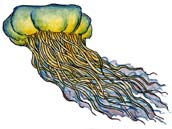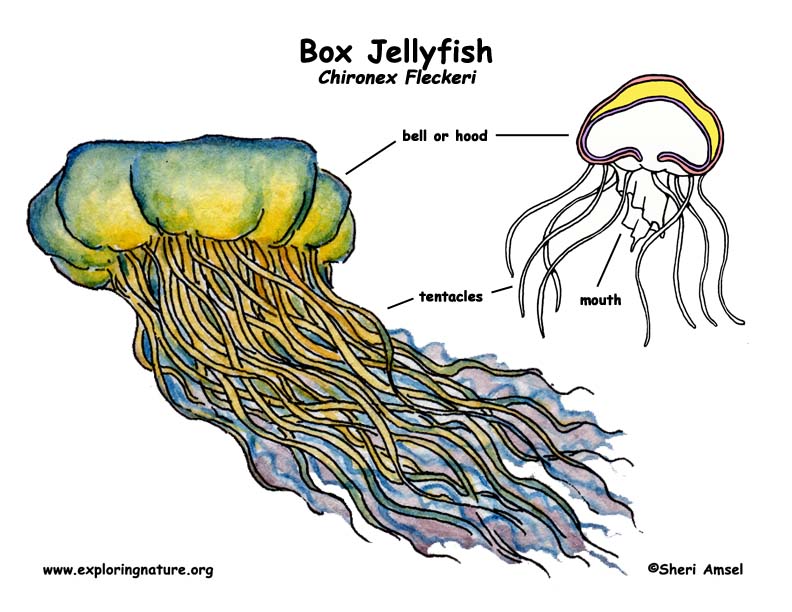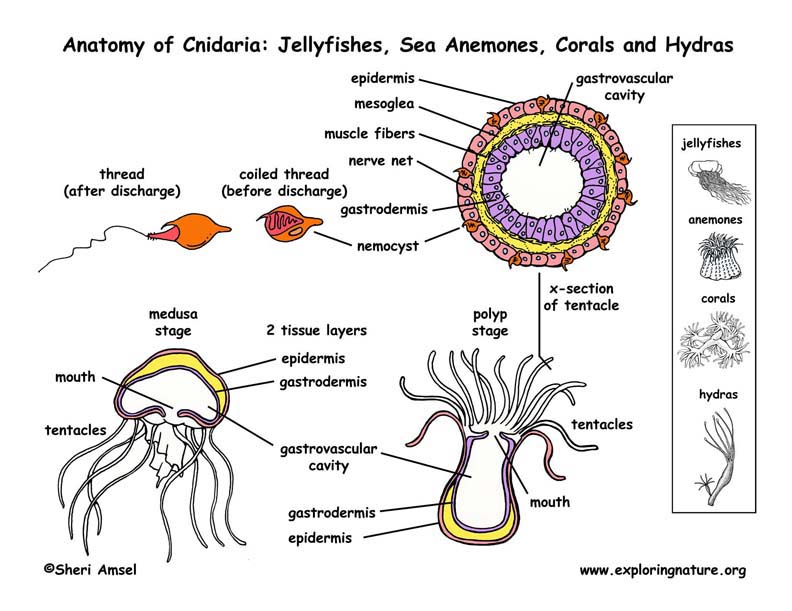

They are found in Northern Australian and Indo-Pacific region.
They live near the shore in shallow waters.
They are pale blue and see through (transparent). They are shaped like a bell or box shaped. They have up to 15 ten-foot-long tentacles on each corner, Each tentacle is covered with deadly stinging cells.
They move quickly through the water with a jet-like motion. Their sting is painful and deadly. This is so prey that happens into their tentacles dies quickly without tearing up the jellyfish. They are often at beaches where humans swim. Their sting will kill a human. They are the most deadly jellyfish in the world.
They eat shrimp and small fish.
Jellyfish lay eggs at the opening of a river in late summer. The eggs stick to rocks. In spring, the small jellyfish go back out to sea.
Kingdom: Animalia
Phylum: Cnidaria
Class: Cubozoa
Order: Chirodropida
Family: Chirodropidae
Genus: Chironex
Species: C. fleckeri
When you research information you must cite the reference. Citing for websites is different from citing from books, magazines and periodicals. The style of citing shown here is from the MLA Style Citations (Modern Language Association).
When citing a WEBSITE the general format is as follows.
Author Last Name, First Name(s). "Title: Subtitle of Part of Web Page, if appropriate." Title: Subtitle: Section of Page if appropriate. Sponsoring/Publishing Agency, If Given. Additional significant descriptive information. Date of Electronic Publication or other Date, such as Last Updated. Day Month Year of access < URL >.
Amsel, Sheri. "Jellyfish (Box)" Exploring Nature Educational Resource ©2005-2024. December 13, 2024
< http://mail.exploringnature.org/db/view/568 >


